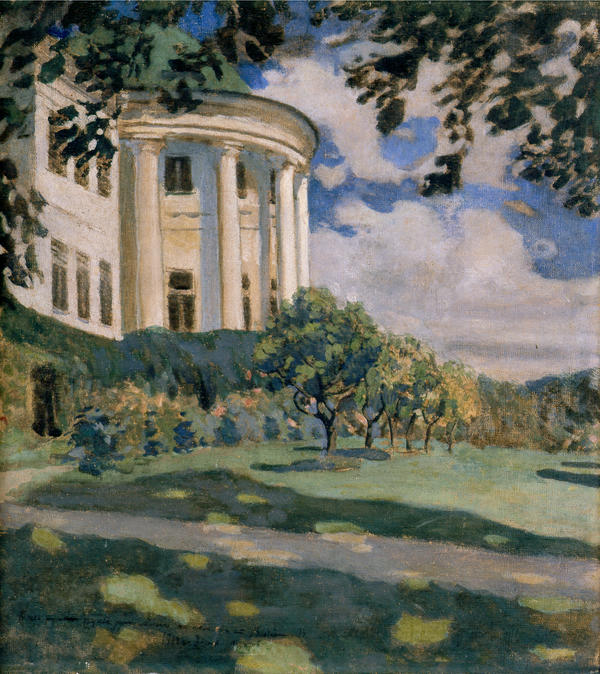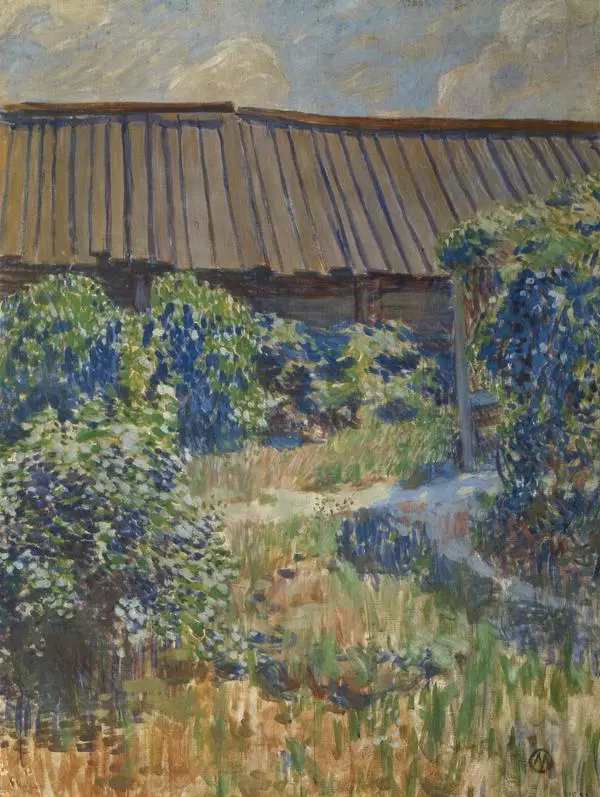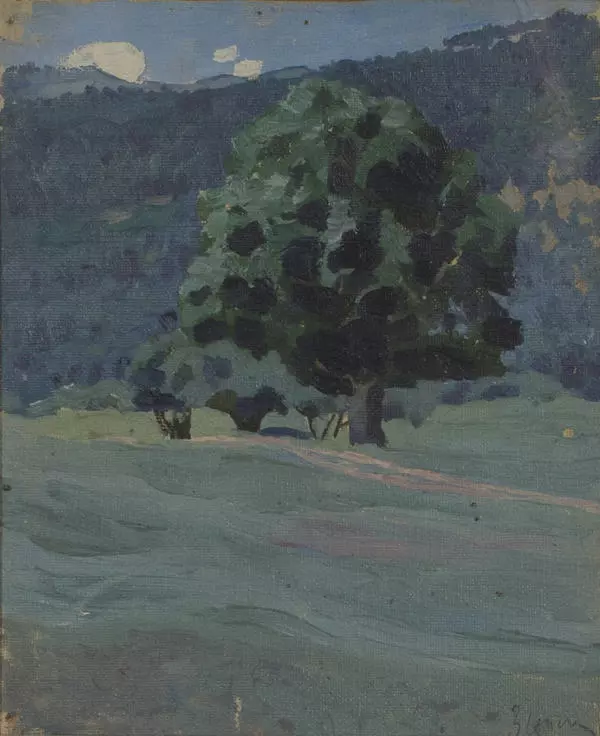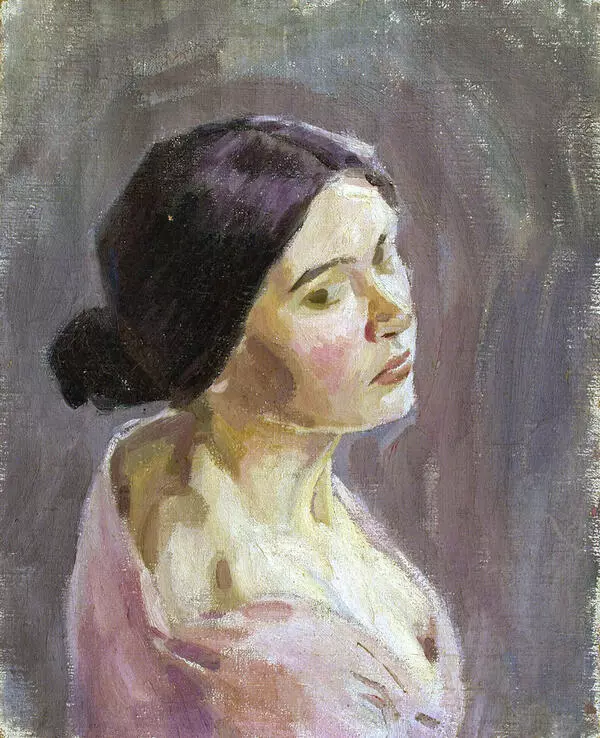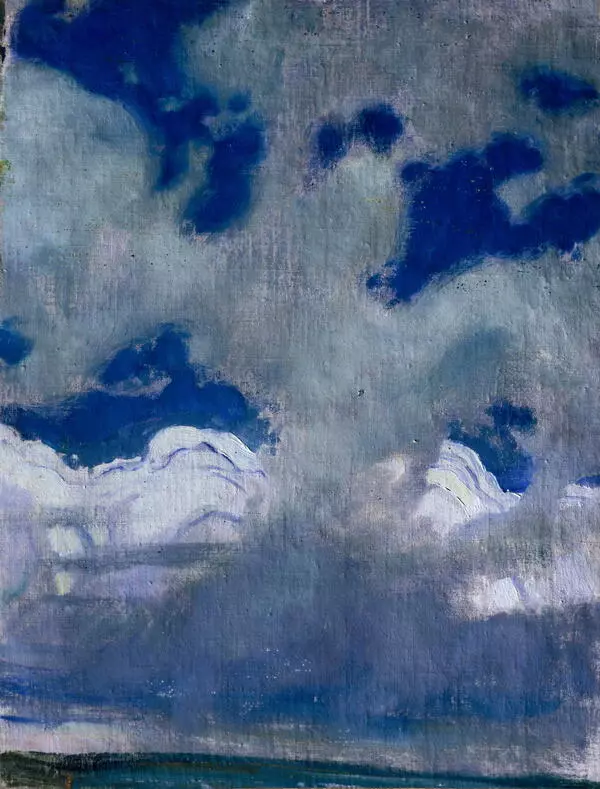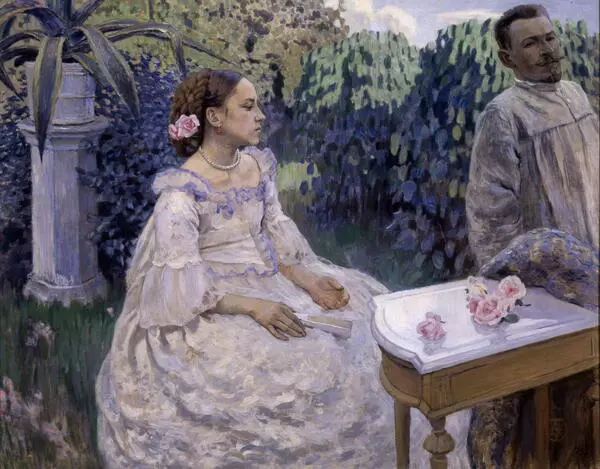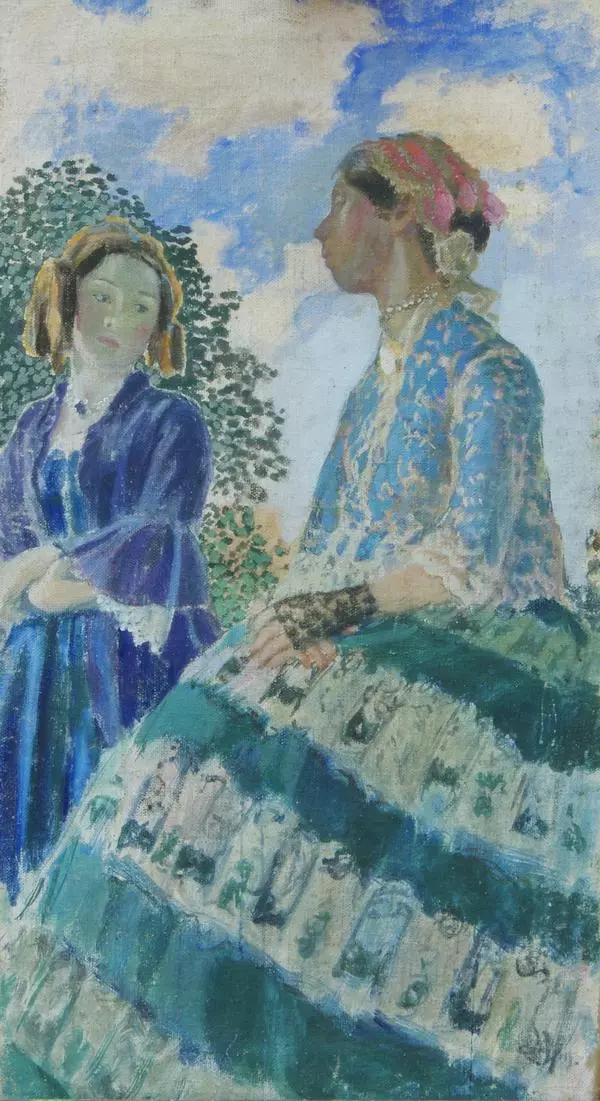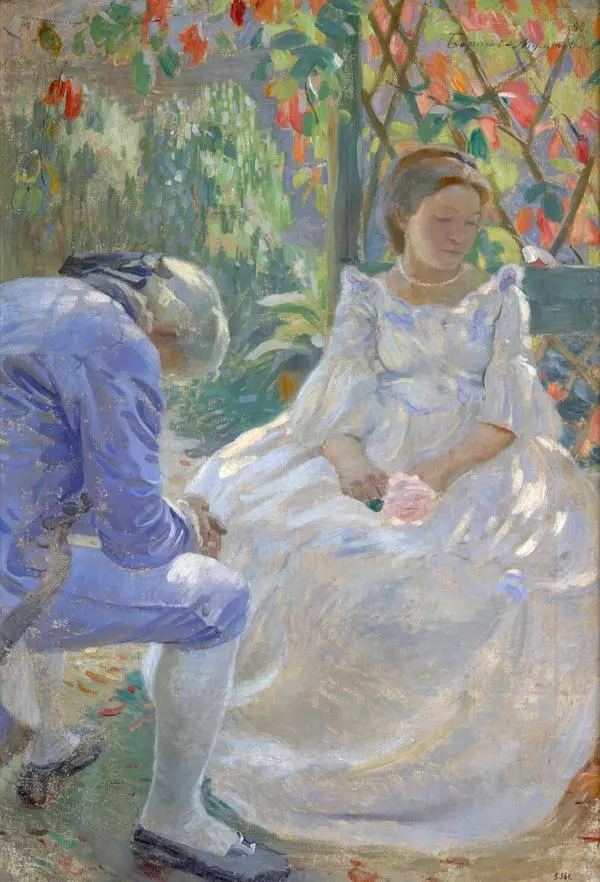Victor Borisov-Musatov was born into a family of a former serf. In the 1890s, he studied painting at the studio of the Saratov Society of Fine Arts, then at the Moscow School of Painting, Sculpture and Architecture, and later at the Imperial Academy of Arts under Pavel Chistyakov. The artist also visited Fernand Cormon’s school in Paris.
Borisov-Musatov became close associate with the artists of Mir iskusstva (the Union of Russian Artists), but he always stood somewhat apart. His paintings are images of the past, but without clearly defined historical boundaries. Musatov was called the singer of a special era he invented, where people and events, fantasies and reality got muddled.
The museum’s collection includes Manor House painted by Victor Borisov-Musatov in 1902. The artist depicted the world of ancient Russian life: a large white house with columns and a deserted alley of an overgrown park. The image of the estate is close to a poetic one, it symbolizes the lost harmony with the world, antiquity going back to the past.
The year of creation of the painting was of great importance to the artist. It was in the old Zubrilovka Manor depicted in the picture where, after several years of separation, Victor Borisov-Musatov became close to his classmate and love – artist Elena Alexandrova. In the fall of 1902, they got married.
Manor House is a symbol of the artist’s inner harmony, peace and happiness. But there is also a sad motif: fading and retrospective. Zubrilovka, as most of noble estates in the 20th century, burned down during a fire in October 1905. By coincidence, this happened a week before the artist’s death.
The mood of paintings by Borisov-Musatov largely coincided with the mood of literary works by his contemporaries: Ivan Bunin, Anton Chekhov, and Andrei Bely. Via his painting, he conveyed a farewell to manor estates, a premonition of fatal events and a vague alarm due to their approach. The artist’s early death reinforced this impression and made his works a sort of dedication to outgoing Russia. The Manor House by Borisov-Musatov is a window into the lost world.
Borisov-Musatov was buried on the outskirts of Tarusa, where he spent the last days of his life. In 1910, a monument in his honour made by his Saratov study friend, sculptor Alexander Matveev, was erected on the artist’s grave.
Borisov-Musatov became close associate with the artists of Mir iskusstva (the Union of Russian Artists), but he always stood somewhat apart. His paintings are images of the past, but without clearly defined historical boundaries. Musatov was called the singer of a special era he invented, where people and events, fantasies and reality got muddled.
The museum’s collection includes Manor House painted by Victor Borisov-Musatov in 1902. The artist depicted the world of ancient Russian life: a large white house with columns and a deserted alley of an overgrown park. The image of the estate is close to a poetic one, it symbolizes the lost harmony with the world, antiquity going back to the past.
The year of creation of the painting was of great importance to the artist. It was in the old Zubrilovka Manor depicted in the picture where, after several years of separation, Victor Borisov-Musatov became close to his classmate and love – artist Elena Alexandrova. In the fall of 1902, they got married.
Manor House is a symbol of the artist’s inner harmony, peace and happiness. But there is also a sad motif: fading and retrospective. Zubrilovka, as most of noble estates in the 20th century, burned down during a fire in October 1905. By coincidence, this happened a week before the artist’s death.
The mood of paintings by Borisov-Musatov largely coincided with the mood of literary works by his contemporaries: Ivan Bunin, Anton Chekhov, and Andrei Bely. Via his painting, he conveyed a farewell to manor estates, a premonition of fatal events and a vague alarm due to their approach. The artist’s early death reinforced this impression and made his works a sort of dedication to outgoing Russia. The Manor House by Borisov-Musatov is a window into the lost world.
Borisov-Musatov was buried on the outskirts of Tarusa, where he spent the last days of his life. In 1910, a monument in his honour made by his Saratov study friend, sculptor Alexander Matveev, was erected on the artist’s grave.

